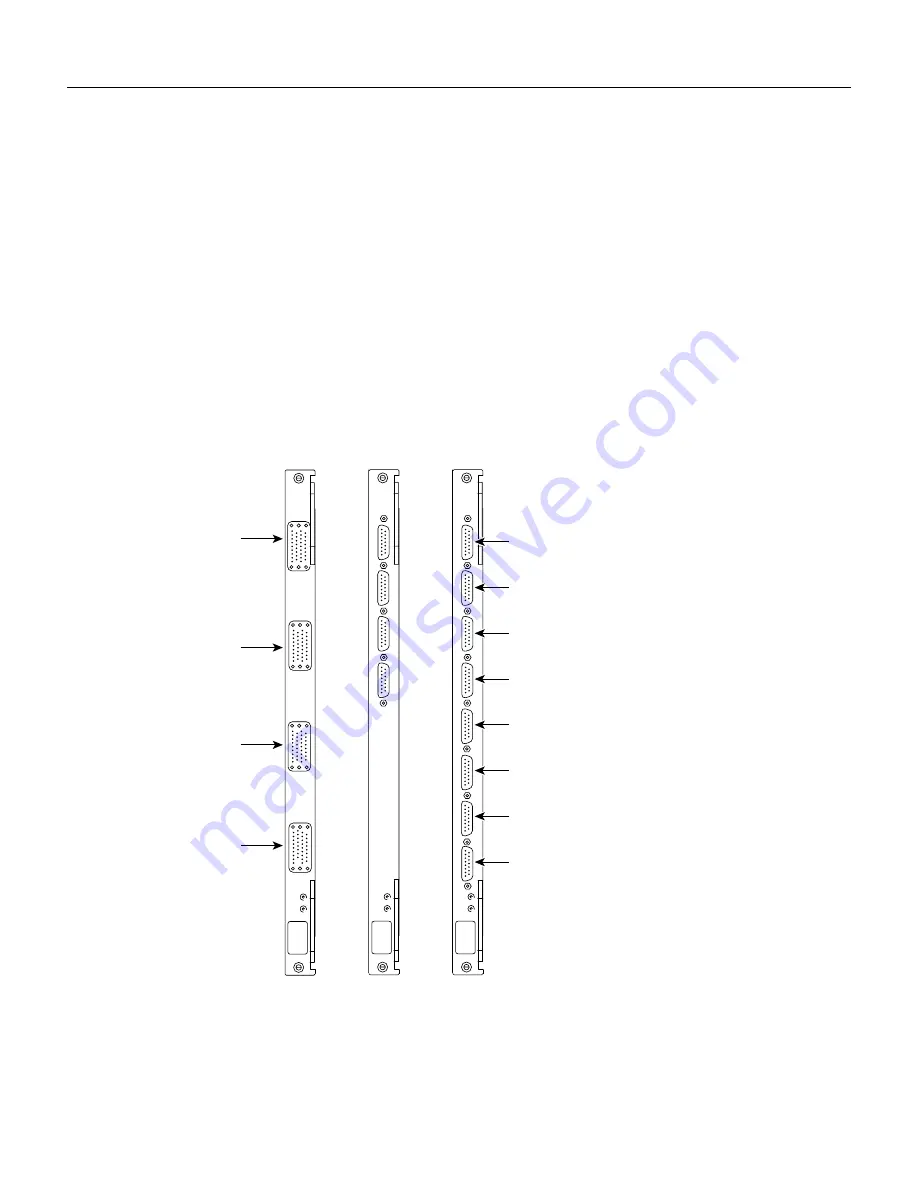
3-24 Cisco IGX 8400 Series Installation and Configuration
Making Serial Data Connections
Making Serial Data Connections
The low-speed data module (LDM) and high-speed data module (HDM) card sets provide serial data
service. Each of these front cards uses a variety of back cards.
The LDM front card uses the 4-port or 8-port version of the low-speed data interface (LDI) back card
for EIA/TIA-232C/D (V.24) connections. The connection ports are labeled PORT 1 through PORT
4 or PORT 1 through PORT 8. See Figure 3-11 for illustrations these back cards. For instructions on
configuring an LDI port for DTE or DCE mode, refer to the section Configuring the Mode of an LDI
Port “Configuring the Mode of an LDI Port on page 26.”
The HDM front card works with four types of serial data interface (SDI) back cards. SDIs are
available. These are V.35, EIA/TIA-449/422, EIA/TIA-232D, and EIA/TIA-232C (V.24). (X.21
uses EIA/TIA-449 plus an adapter cable.) Each type of SDI has four connection ports, which are
labeled PORT 1 through PORT 4. An example SDI card appears in Figure 3-11.
When you connect an HDM or LDM port, use the shortest reasonable cable length for each port.
Figure 3-11
SDI and LDI Faceplates
LDI
xxxxxx
xxxx xxx
xxxxxx
xxx xxxx
x xx
xx xx xx
LDI
xxxxxx
xxxx xxx
xxxxxx
xxx xxxx
x xx
xx xx xx
Port 1
Port 2
Port 3
Port 4
Port 1
Port 3
Port 5
Port 6
Port 2
Port 4
Port 7
Port 8
SDI
xxxxxx
xxxx xxx
xxxxxx
xxx xxxx
x xx
xx xx xx
LDI 4 Port
LDI 8 Port
SDI
(V.35 shown)
H8355
















































